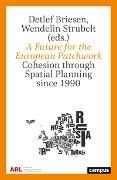Mehr lesen
The issue of cohesion and the policies associated with it are concerns not only for supranational entities such as the EU, but also for nation states and regions alike. Traditional instruments for promoting cohesion include symbolic, economic and social policies. However, given the contemporary tensions at both the international and domestic levels, attempts to create or maintain ¿cohesion¿ are so important that innovative approaches must be pursued. This book asks to what extent spatial and urban planning, in their claim to be more than just sectoral policies, have contributed to the cohesion of societies over the last 30 years: at European, intergovernmental, national and regional levels - in times of challenging transformations on all spatial levels. The book is therefore divided into three parts, which examine the achievements and shortcomings of cohesion policies in their theoretical assumptions, at national and regional level, and in intergovernmental cooperation. The various contributions show that spatial cohesion policies are significant factors for the cohesion of societies even beyond their borders, but that these have too often not received the recognition they deserve.
Über den Autor / die Autorin
Detlef Briesen is a social scientist and historian. He teaches at Justus Liebig University Giessen, and at the University of Social Sciences and Humanities, Hanoi.
Detlef Briesen, PD Dr. phil., ist als Hochschullehrer und -berater an der Universität Gießen und in Südostasien tätig.
Wendelin Strubelt is a social scientist in the field of urban and regional sociology. Before his retirement 2008 he was Vice President and Professor of the Federal Office for Building and Regional Planning.
Wendelin Strubelt, Dr. rer. pol, war Vizepräsident und Professor des Bundesamts für Bauwesen und Raumordnung.
Zusammenfassung
The issue of cohesion and the policies associated with it are concerns not only for supranational entities such as the EU, but also for nation states and regions alike. Traditional instruments for promoting cohesion include symbolic, economic and social policies. However, given the contemporary tensions at both the international and domestic levels, attempts to create or maintain ›cohesion‹ are so important that innovative approaches must be pursued. This book asks to what extent spatial and urban planning, in their claim to be more than just sectoral policies, have contributed to the cohesion of societies over the last 30 years: at European, intergovernmental, national and regional levels – in times of challenging transformations on all spatial levels. The book is therefore divided into three parts, which examine the achievements and shortcomings of cohesion policies in their theoretical assumptions, at national and regional level, and in intergovernmental cooperation. The various contributions show that spatial cohesion policies are significant factors for the cohesion of societies even beyond their borders, but that these have too often not received the recognition they deserve.
Vorwort
The first attempt to evaluate cohesion policy over the last 30 years at European, national and regional level

